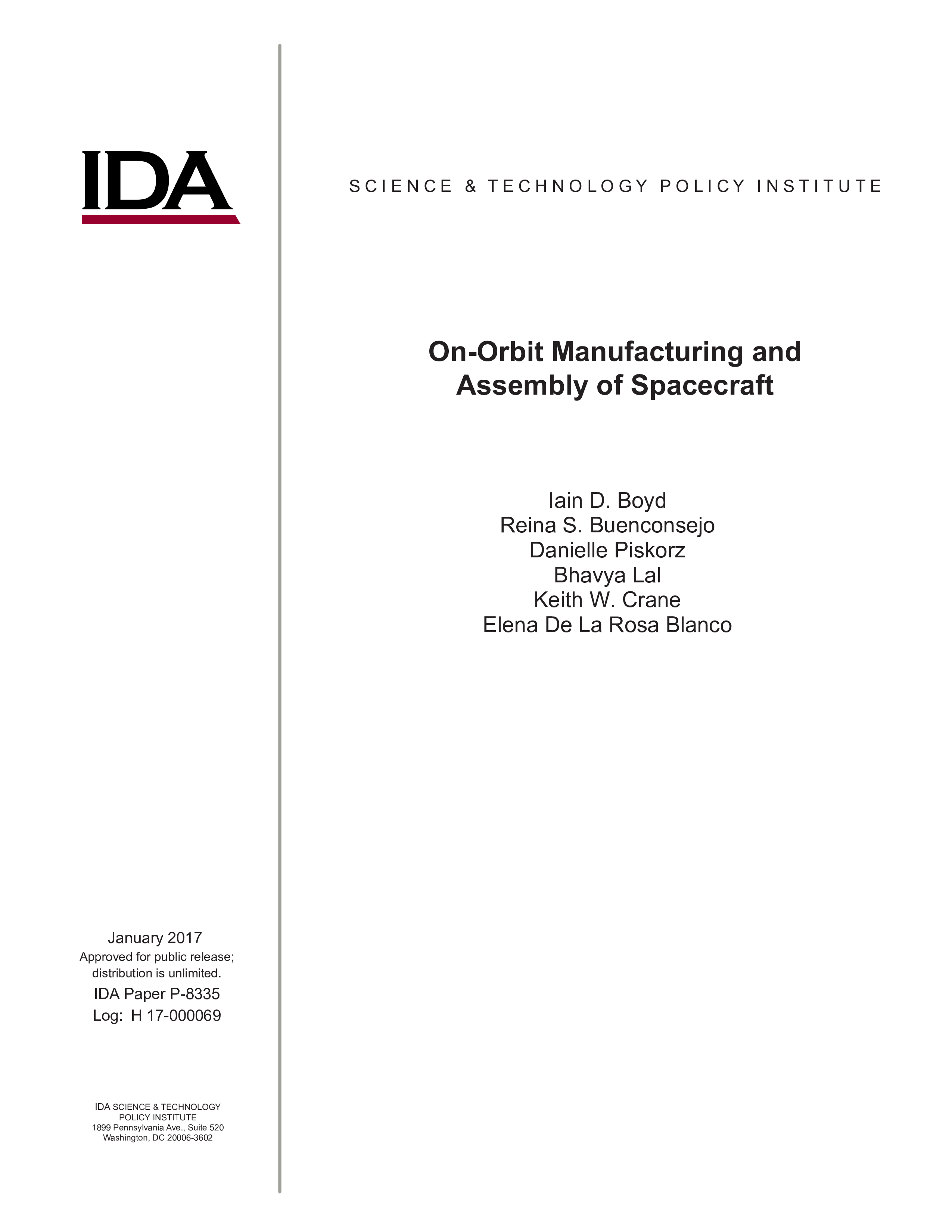On-Orbit Manufacturing and Assembly of Spacecraft
January, 2017
IDA document: P-8335
FFRDC: Science and Technology Policy Institute
Type: Documents,
Space
Division:
Authors:
IDA document: P-8335
FFRDC: Science and Technology Policy Institute
Type: Documents
Division:
Authors:
Authors
Iain D. Boyd, Reina S. Buenconsejo, Danielle Piskorz, Bhavya Lal, Keith W. Crane, Elena De La Rosa Blanco
See more authors

